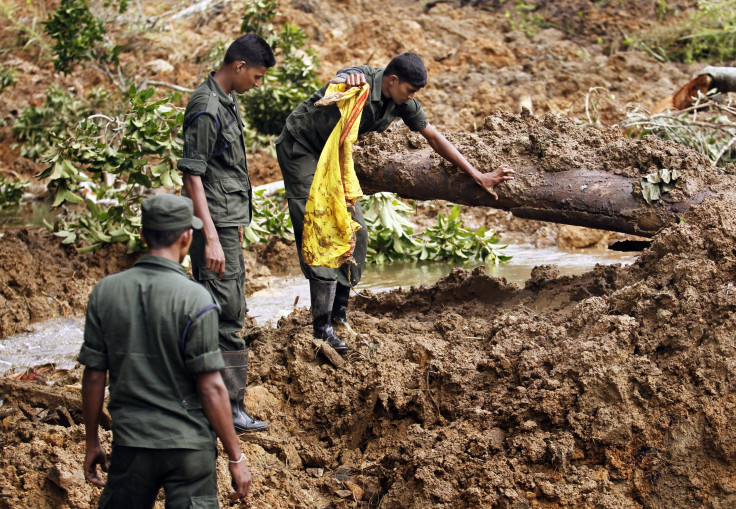Sri Lanka Mudslide Claims 3 Lives; Army Evacuates 60,000 People Due To Heavy Floods, Rains

Three people were killed and over 60,000 were evacuated from their houses due to heavy floods and mudslides caused by torrential rains in Sri Lanka, reports said, citing officials. The rain, which is still continuing, has already destroyed nearly 1,900 houses, The Associated Press reported, citing government officials.
The country’s 15 districts have been witnessing heavy rains for the past three days. Hospitals and other government buildings in the country had also been reportedly flooded. Some inmates of a prison had also been transferred to other facilities in the country.
According to an official statement released by the Sri Lankan government on Monday, over 7,000 army personnel were deployed to the areas affected by the floods. The army also provided packets of cooked meals to the families who were left stranded due to the destruction caused by the floods.
On Tuesday, the country’s meteorological department had warned that high winds and heavy showers are likely to continue across the country’s northern and eastern coasts.
“Due to the atmospheric disturbance in the vicinity of Sri Lanka the possibility for rain and the strong winds during thunder showers is very high, the Met. Dept. forecasts,” the government said, in a statement on Tuesday, adding: “There may be temporary localized strong winds during thundershowers. General public is kindly requested to take adequate precautions to minimize the damages caused by lightning activities.”
Earlier in October, heavy rains had caused mudslides at a tea plantation, 120 miles from the capital city of Colombo, killing more than 100 people. Over 60 houses were buried in the mudslide, which sprawled almost 2 miles.
© Copyright IBTimes 2025. All rights reserved.






















